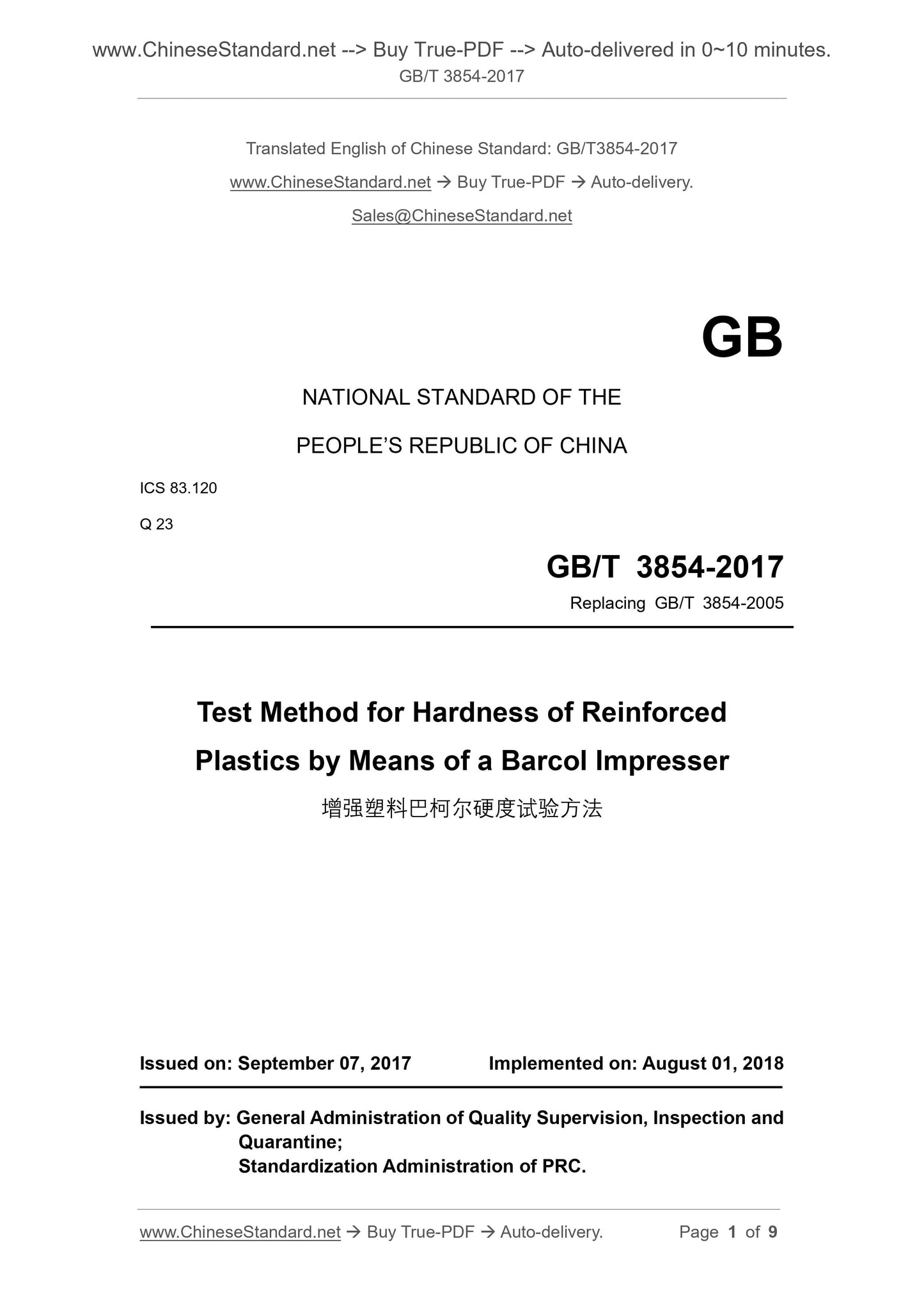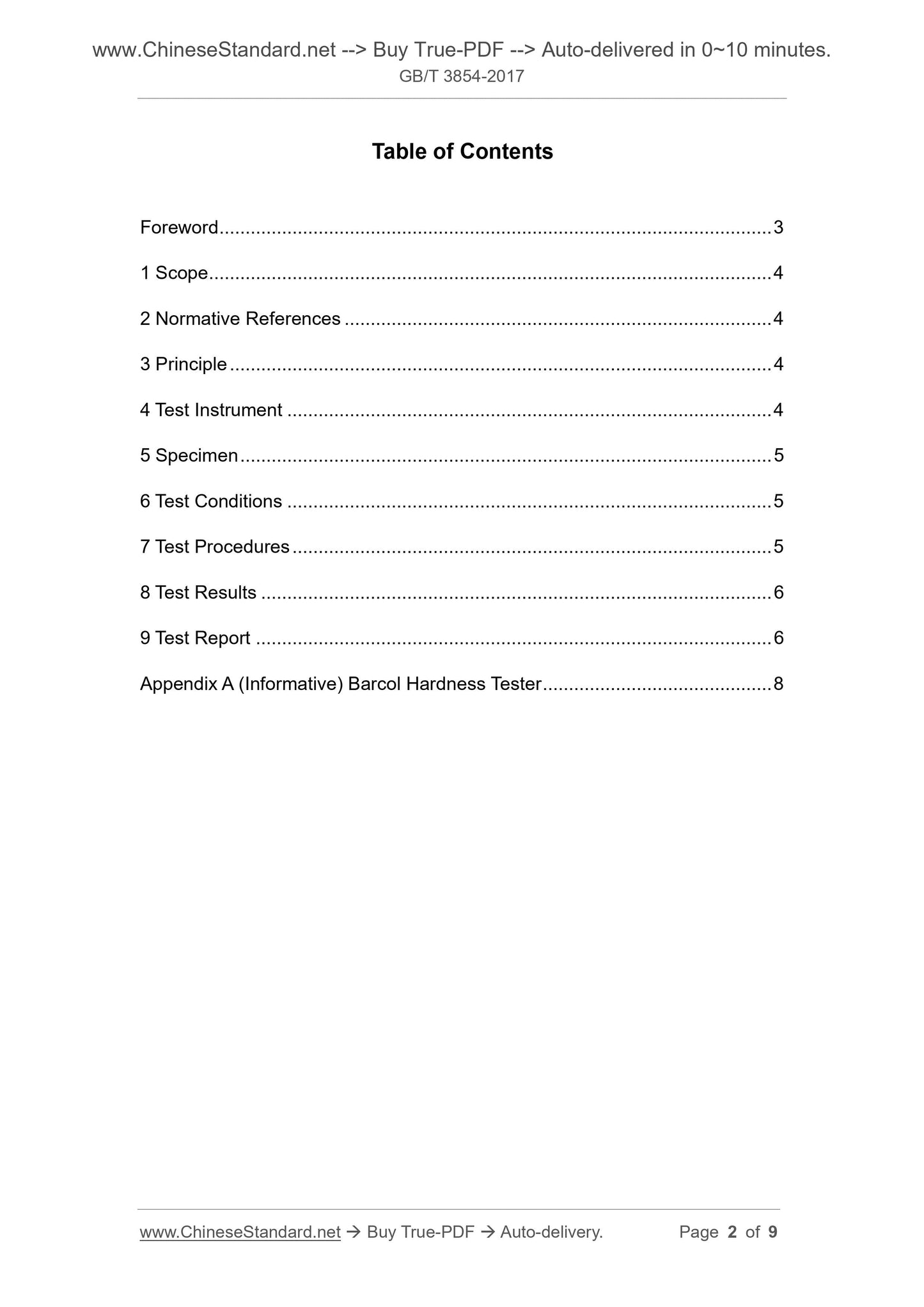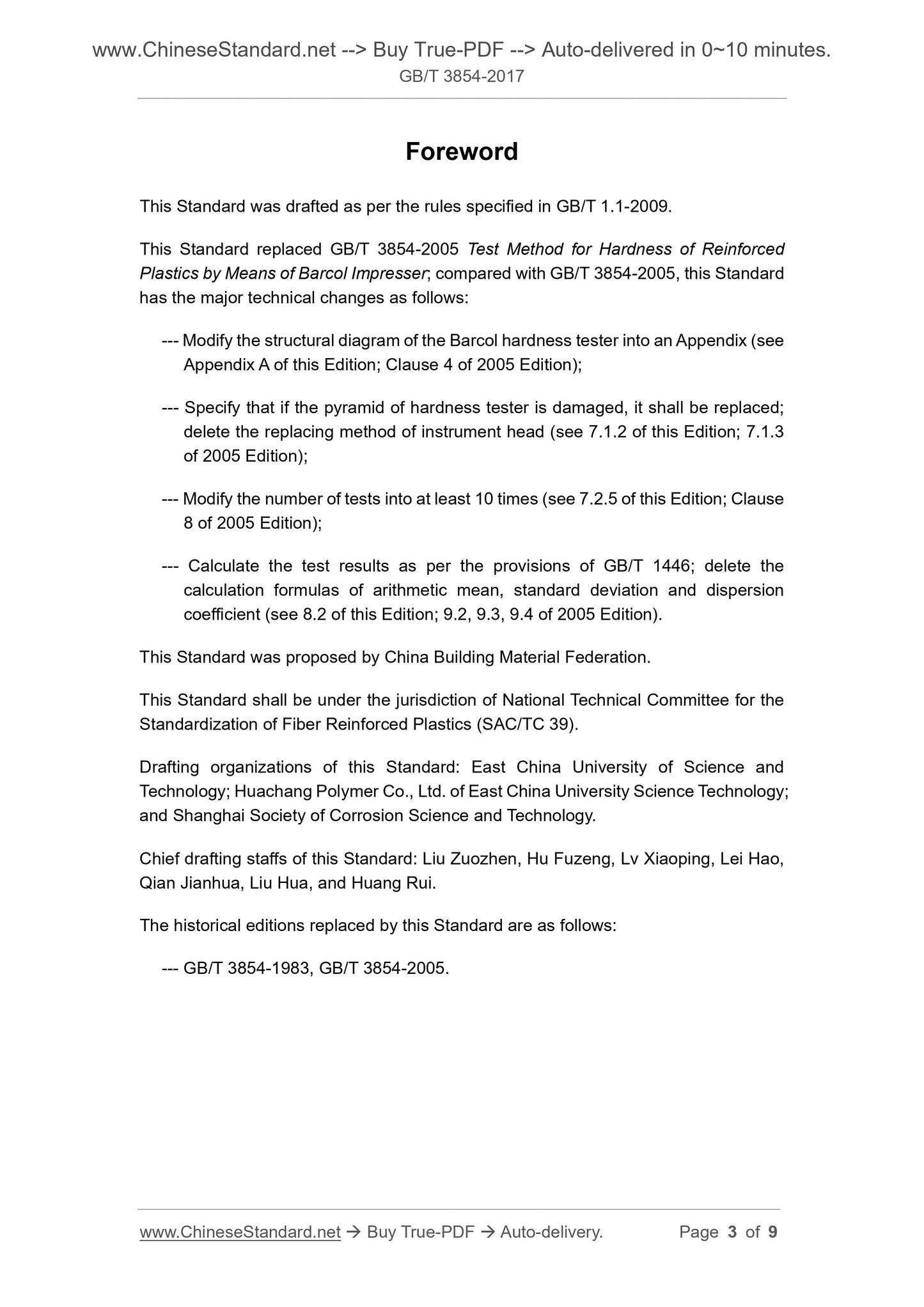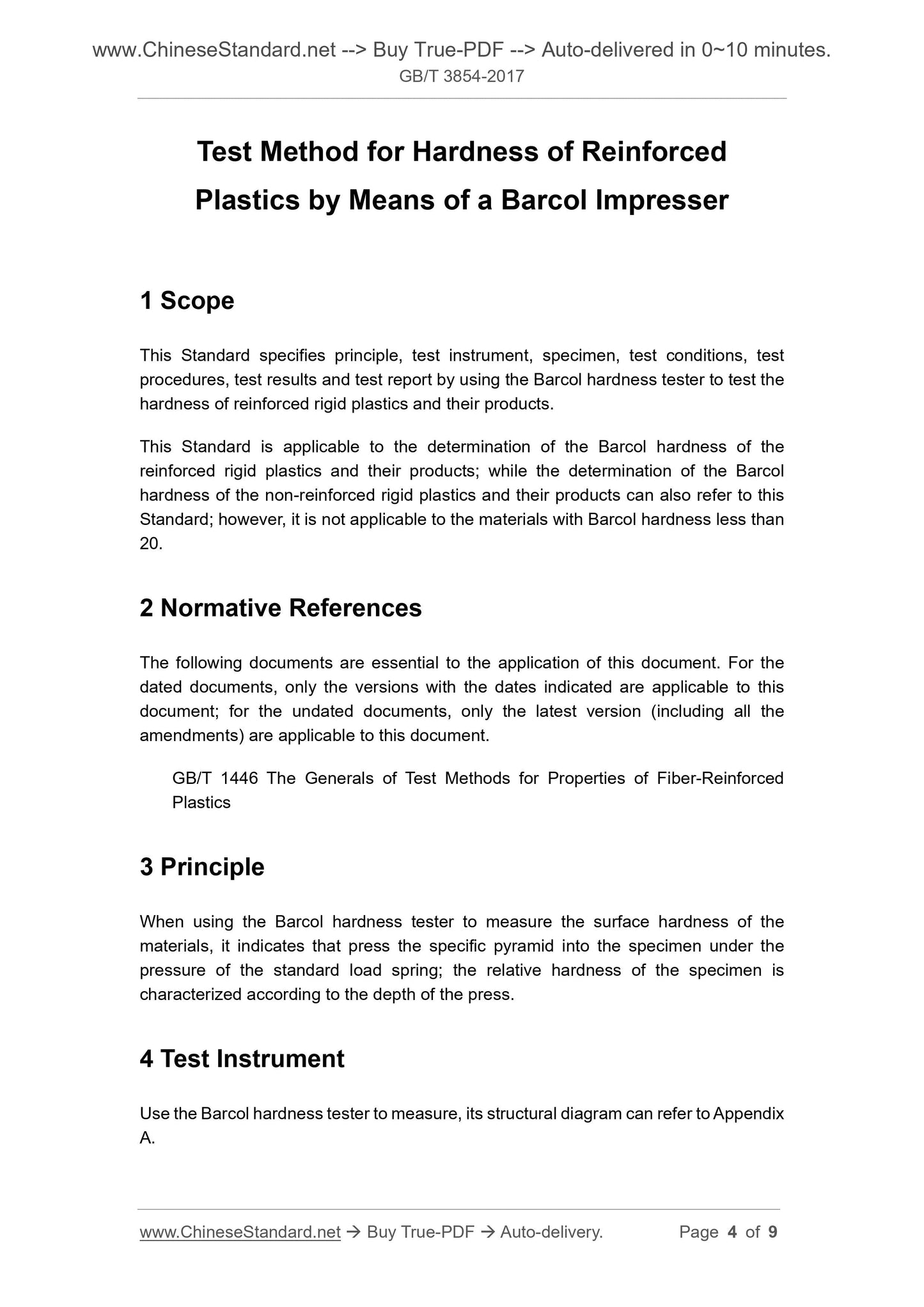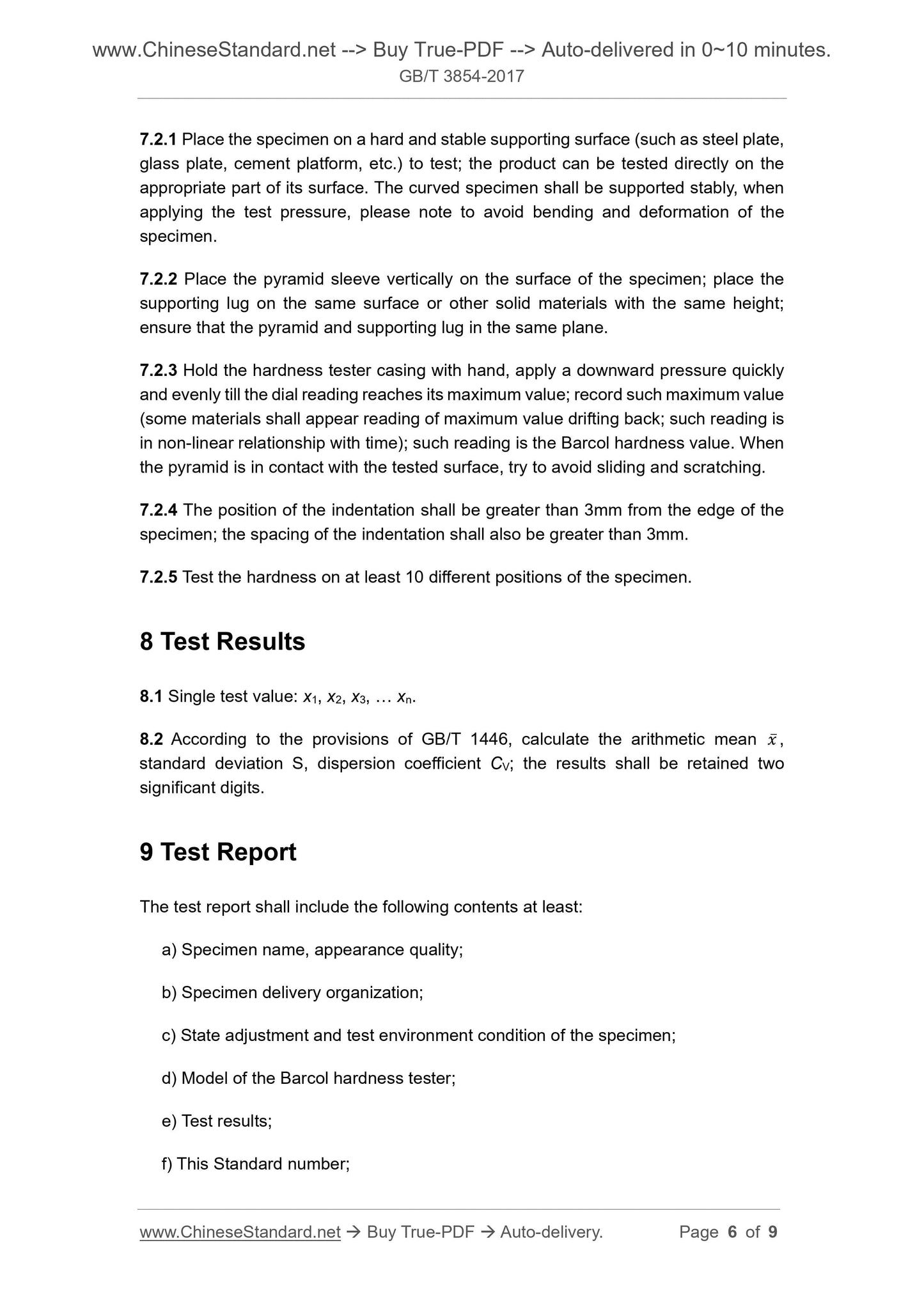1
/
of
5
www.ChineseStandard.us -- Field Test Asia Pte. Ltd.
GB/T 3854-2017 English PDF (GB/T3854-2017)
GB/T 3854-2017 English PDF (GB/T3854-2017)
Regular price
$80.00
Regular price
Sale price
$80.00
Unit price
/
per
Shipping calculated at checkout.
Couldn't load pickup availability
GB/T 3854-2017: Test method for hardness of reinforced plastics by means of a Barcol impresser
Delivery: 9 seconds. Download (and Email) true-PDF + Invoice.Get Quotation: Click GB/T 3854-2017 (Self-service in 1-minute)
Newer / historical versions: GB/T 3854-2017
Preview True-PDF
Scope
This Standard specifies principle, test instrument, specimen, test conditions, test procedures, test results and test report by using the Barcol hardness tester to test the hardness of reinforced rigid plastics and their products.This Standard is applicable to the determination of the Barcol hardness of the reinforced rigid plastics and their products; while the determination of the Barcol hardness of the non-reinforced rigid plastics and their products can also refer to this Standard; however, it is not applicable to the materials with Barcol hardness less than
20.
Basic Data
| Standard ID | GB/T 3854-2017 (GB/T3854-2017) |
| Description (Translated English) | Test method for hardness of reinforced plastics by means of a Barcol impresser |
| Sector / Industry | National Standard (Recommended) |
| Classification of Chinese Standard | Q23 |
| Word Count Estimation | 5,561 |
| Date of Issue | 2017-09-07 |
| Date of Implementation | 2018-08-01 |
| Older Standard (superseded by this standard) | GB/T 3854-2005 |
| Issuing agency(ies) | General Administration of Quality Supervision, Inspection and Quarantine of the People's Republic of China, Standardization Administration of the People's Republic of China |
Share
